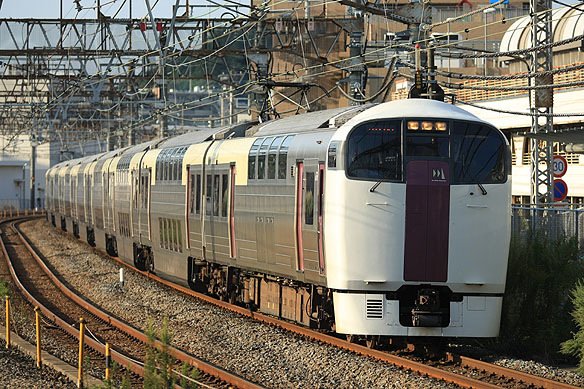JR East developed 215 series in 1992. They were particularly aimed at relieving
overcrowding on the busy long-distance commuter services on the Tokaido
line into Tokyo. All vehicles except end cars are bilevel to giving more
seats. The end cars are equipped with traction system and other auxiliary
equipments. The vehicle design is incorporated light-weight stainless steel
and field added excitation control system based on those of 211 series.
Traction motors, MT61, rated at 120kW realize a maximum service speed of
120km/h by increasing field weakening ratio up to 30%. 215 series use the
same bogies as 251 series. Bogies adopt the yaw dampers and anti-rolling
stabilizer to ensure smooth ride characteristics for their large body.
The roof where the current collector is fitted became lower to enter the
services on the Chuo line. End cars are equipped with the automatic jumper
coupler in order to couple/uncouple formations easily. End cars are equipped
with an emergency door in front of them to get ready for underground railway
use in the future.
The seats of standard class are arranged 2+2 abreast, do not rotate, and
do not recline. 1st class vehicles have 2+2 abreast seating, which is rotatable
and adjustable reclining, and seat pitch is 970mm.
Although, 215 series had been used on the "Shonan liner" commuter services and the "Acty" rapid services of the Tokaido line, now these fleets are only used on the "Shonan liner" commuter services. |
|

